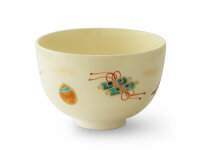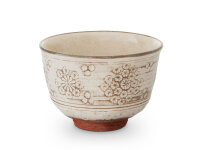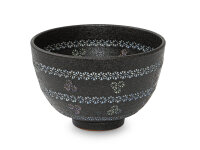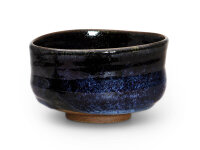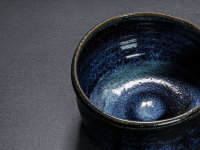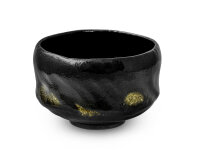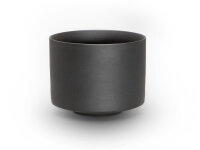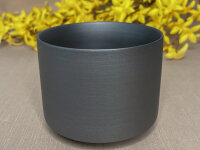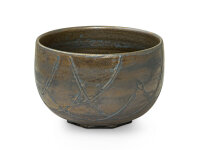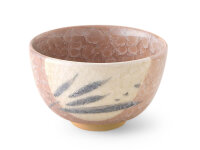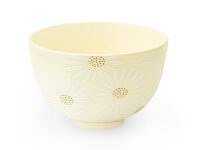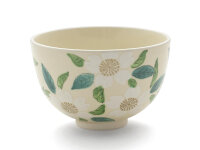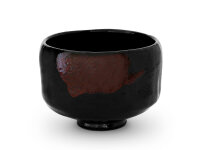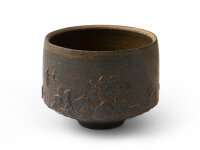
Matcha Bowls
A Matcha Bowl is Cradled in the Right Hand and Supported by the Left Hand
For the authentic enjoyment of the magical tea from Japan, it's indispensable. The Matcha Bowl. It's in this bowl that the perfect Japanese tea is prepared, and from it, the healthy, bittersweet beverage that can rightfully be called a trend drink is consumed. So, what should the Matcha Bowl (Chawan) look like, and what characteristics should it possess?
Beauty in the Eye of the Beholder
For those who have already looked around a bit, they will have noticed an incredibly large variety of different specimens. Since high-quality Japanese tea bowls are handcrafted, each one is unique, resulting in countless interpretations of beauty. From smooth and even, with a bright, luminous color to almost dark black, from adorned with fine painting to a rough and angular surface. It must be noted that there are no set guidelines for execution; individual preferences and taste are what matter. Naturally, the value and quality of the matcha tea bowl depend on the manufacturer or artist who created it. When making your selection, consider the vibrant green that will soon fill the matcha bowl.
The Practical Aspects of the Matcha Bowl
Because the variety is as vast as the imagination, there are some practical considerations for the right selection, which are important for preparation and enjoyment. The inner surface of the tea bowl should be smooth to protect the bamboo whisk. In particular, convex irregularities can damage this important accessory, and since the whisk also holds value, especially if it's a Japanese, handmade matcha whisk, it makes sense to pay attention to this. Also, the rim of the matcha bowl should be smooth. In Japan, the tea master (host) wipes the rim clean with a small cloth (Chakin) before handing the matcha tea to the guest, and no lint should be left behind. Secondly, the guest or oneself should have the most pleasant drinking experience possible. For these reasons, most Japanese Chawan (tea bowls) are coated with a durable glaze.
Even the foot of the matcha bowl has significance. In the Japanese tea ceremony, the tea master holds the tea bowl with their left hand - thumb at the top rim, fingers on the foot's ring - to pour out the water used to rinse the matcha bowl before preparation. However, the matcha bowl must also stand level and securely, as it should not move when whisking the matcha tea into a froth. The foot should be smooth enough not to scratch the surface on which the matcha bowl stands.
In Japan, there are several ways to design the foot (Koudai): The Kabuto (Helmet) style is recognizable by the fact that the clay in the center of the bowl's base is brought together into a sharp, small point. This point is naturally flatter than the footring itself and has a purely decorative character. Some tea masters reject this style because they think it could become painful for sensitive hands over time, especially when preparing a lot of matcha. They prefer a completely smooth bottom.
Important: The Ideal Dimensions
The diameter of matcha bowls at the top rim should be approximately 11 to 13 cm, and the height should ideally be between 6.5 and 8 cm. Why is size so important? Firstly, the tea master and the guest must be able to grip the vessel comfortably. More importantly, there should be enough room to whisk the tea into a froth with the whisk without splattering. Some providers also offer shallower versions. These "Summer Bowls" (Natsujawan) or Hirajawan are designed with the idea that the tea can cool faster in hot weather. However, when whisking, one must be more careful not to unintentionally distribute the valuable green liquid.
Special Types of Matcha Bowls
In addition to the most common types, there are three special types of tea bowls for powdered tea:
- Tsutsu-Jawan is a tea bowl that is shaped like a tube. It is a narrower, larger Chawan and is traditionally used only in the coldest month of winter. In Japan, this is mainly February.
- The second special type is called either Ko-Jawan (small tea bowl) or Nodate-Jawan (tea bowl for outdoors). This is a smaller Chawan considered portable. It can be transported either in a bag along with other smaller matcha utensils (including a collapsible teaspoon) or the Ko-Jawan is packed in a special Chabako (tea box), usually as a complete matcha set. Its dimensions are approximately Ø 9.5 - 10 cm, with a height of usually only about 6 - 6.5 cm.
- Tenmoku-Jawan is the third of the special forms, a V-shaped tea bowl with a very small foot. In the traditional tea ceremony, this Japanese original is used exclusively to serve tea to nobility. Most lovers of green tea will never need a Tenmoku-Jawan.
For the two bowls Tsutsu-Jawan and Nodate-Jawan, smaller matcha whisks are required. So if you come across one of these tea bowls and consider acquiring an original, remember to also purchase an appropriate whisk. If you want to buy a Ko-Jawan, it's best to choose a matching matcha set.

